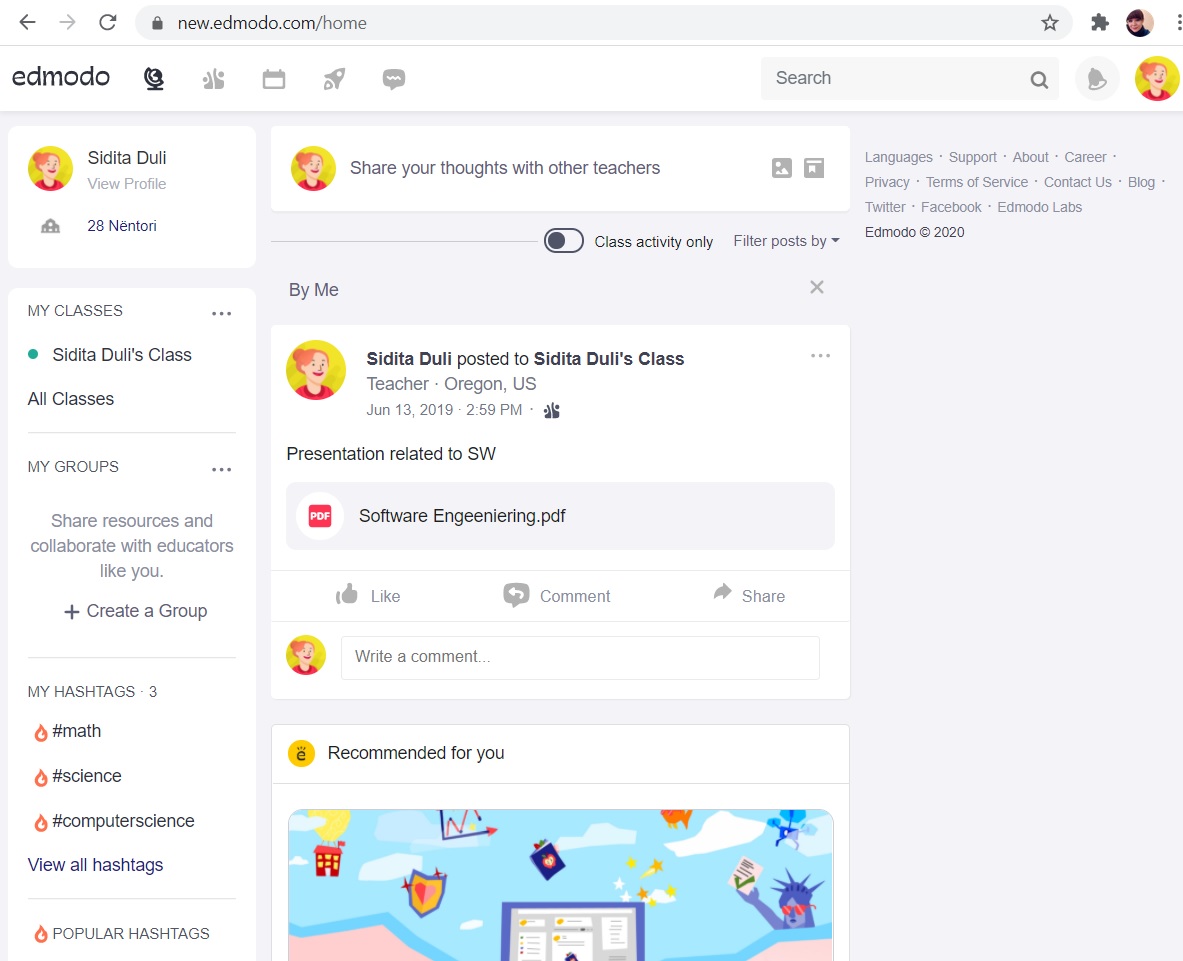What is the new Edmodo?
Online learning platforms have become a trend in education. Web 2.0 technologies provide us with many educational resources, thus becoming an important accessory in school. One of these Web 2.0 platforms is the new Edmodo, which is offered for free.
Wikis, blogs, RSS feeds, and social networks are tools that teachers use to integrate the student community with non-formal education.
The Web 2.0 technology toolkit enables us to create and manage the teacher-student relationship.
Students find this new way of communication very attractive and spend a lot of time sharing information online. Perhaps this is another reason students and parents should use these platforms.
Features of new Edmodo
The new Edmodo is similar to Facebook but more private and safer for teaching. It is part of the K-12 social learning network, a special network used in education.
You don’t have to worry about buying or maintaining costs because it’s free.

Example of new Edmodo profile page
Students and teachers can share lectures and examples on this platform in private groups. The new Edmodo provides security to create collaborative groups to share documents and materials related to course assignments. It helps the students to stay organized while they have team projects.
Parents may also be members of such groups, who can monitor their children’s work. Through this platform, teachers can set assignments and the date when students should submit them. Teachers can also grade the students based on assignments submitted online. They will monitor the student’s progress for each assignment or team project.
The new Edmodo allows fellow teachers to customize their teaching space fully. Using this platform, teachers can connect directly with peers to share resources or participate in online discussions. It also encourages students to choose a smiley for each course assignment completed as a practical way to show how they felt during the assignment.
The new Edmodo has no age restrictions on registration. When teachers create a virtual classroom, each student is given a unique access code that is used as a credential to enter the classroom. This avoids the process of creating emails for students under the age of 16.
One of this platform’s innovations is the opportunity to offer students feedback directly after reading the online lecture. For teachers, this is professional development because online resources are the new trend in education.

